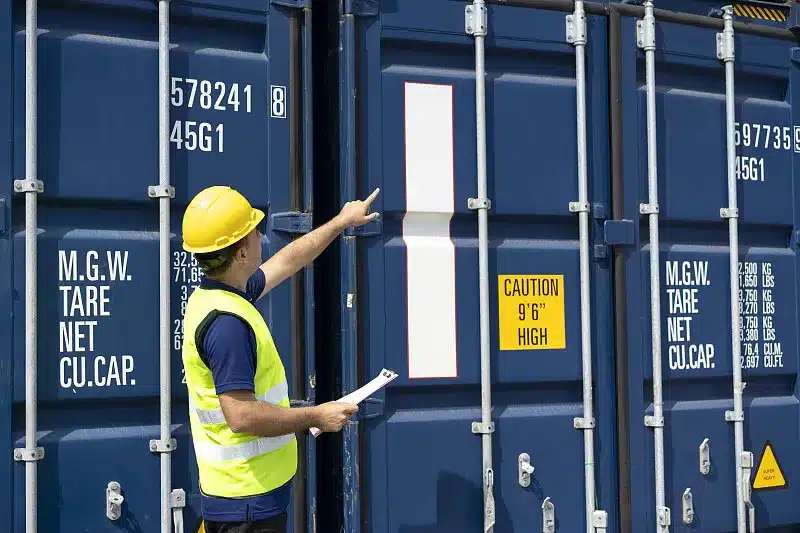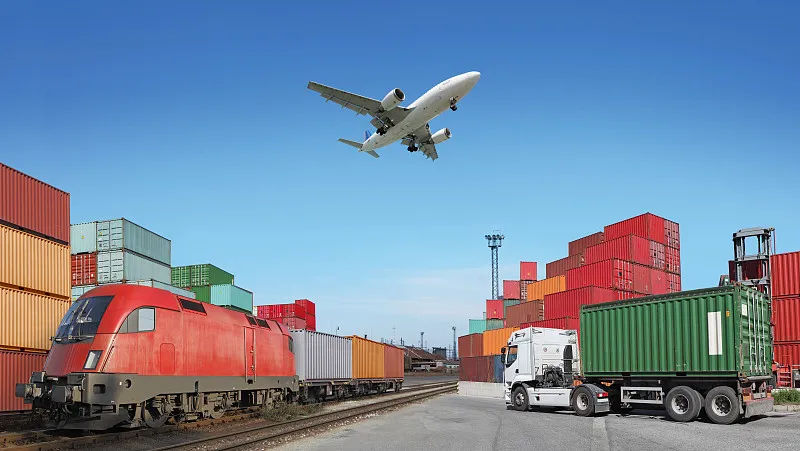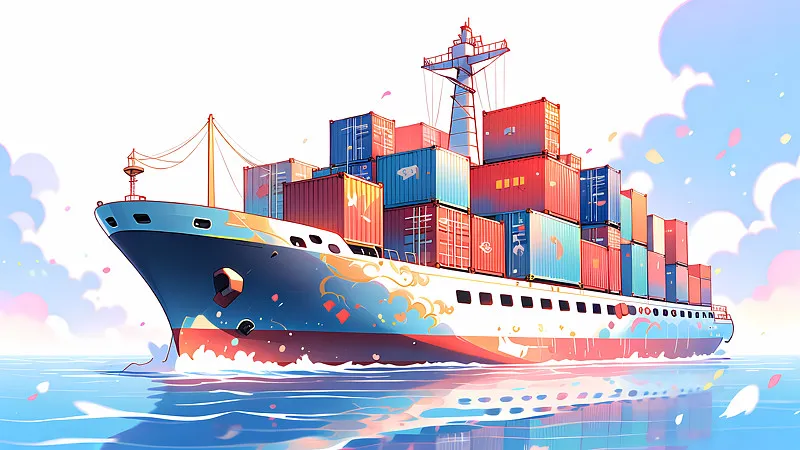Unraveling the challenges of international trade isn’t very hard now. Our comprehensive guide, Mastering Customs Clearance: In our article, Shipping Made Easy: The 8 Documents You’ll Ever Need, we explain everything you need to know about customs documents. Using examples such as invoices and bills of lading, certificates of origin, and declarations, you will understand how to prepare for, store, and present the correct documents while exporting your goods. This is an ideal guide whether you are a first-time importer exporter or you are an experienced one; this guide will assist you in learning the basics, avoiding some of the common mistakes that are normally committed, common barriers to import and export, how to minimize costs and also how to ensure that you proceed with the laws governing imports and exports. Reducing customs process expenses and achieving an efficient process is possible today.

Excise is one of the mechanisms of regulating international transport and trade of goods that should be granted by customs when importing or exporting them. International Air Transport Association. After a shipment has been cleared, it is then released with official documents that assure the shippers that all the customs duty that may have been charged has been paid so that the shipment is not held up.
Customs clearance is an important procedure of legalizing the right of goods to be imported into a certain country through an authorized customs broker transport company date. This includes checking the shipping and international customs documents issued, fulfilling and confirming the international trade regulations, and contacting all the parties implicated in the transaction freight forwarders associations.
What is Customs Clearance?
Every time before sending their cargo abroad, the shippers may demise the topic of customs clearance and its relevance to the overall supply chain. Each sea or rail transport contract or mode of goods requires compliance with the import customs formalities of the importing country.
Customs clearance is an important procedure of legalizing the right of goods to be imported in a certain country through an authorized customs broker transport company date. This includes checking the shipping and international customs documents issued and fulfilling and confirming the international trade regulations and getting in touch with all the parties implicated in the transaction freight forwarders associations.
What is a Customs Broker?
A customs broker is defined as an agent who operates on behalf of importers in that he or she takes charge of customs business transactions.
These brokers, which are allowed by tariff laws, could either be independent persons or firms which are recognized by U.S Custom and Border Protection (CBP). This entails creating entries for customs and coordinating payments for duties together with handling and any issues concerning CBP release from custody.
Services Provided by Customs Brokers
Customs brokers are engaged in a lot of activities such as helping their clients with codes of products under the HTS. Such are numbers generally ranging between 8 and 10 digits in length and are used in helping in classification of products. The first 6 digits are the HS code and the other digits are a further classification of products as specified by the importing country. These codes in the United States are administered by the U.S. International Trade Commission.
Another service that is provided by a customs broker is classification of products and more specifically identification of country of origin which is essential for correct marking. The CO is then considered as the country where the product was mainly built or to which most of the work was done in its construction. As this determination can be occasionally intricate, the customs brokers offer professional services in relation to the processing.
The 5 Vital Documents for Seamless Customs Clearance
Clearance procedure is the initial portal commonly regarded as the starting point in economies ‘blessed’ with the privilege of engaging in exports and imports —a crucial but a highly dreaded stage for the traders. Anything that may slow down the transport, administrative mistakes, or additional costs can be quite unnerving, even to a seasoned shipper. But there’s good news: The main message of this article is clear – clearing customs is all about preparation. Serving at the center of this preparation is a list of documents of which you cannot afford to be without as you plan for the preparation—The Five pieces.
Essential Documents for Customs Clearance process
To ensure your goods clear customs without any issues, there are several key customs transit documents that you need to be aware of. Below are the most common and essential customs clearance documents:
1. Commercial Invoice
So that your consignment of goods remains at the border, you should have the essential customs value declaration documents. Below are the most common and essential customs clearance documents:
- The commercial invoice is one of the documents that are most important when clearing goods through customs. It stands to represent the legal document of an exchange between the buyer and seller and describes the products being transported. The commercial invoice includes:
- An identification of the various features of the items.
- The value of the goods.
- The country of origin.
- The selling price or cost, insurance and freight, and terms of delivery (Incoterms).
- Buyer and seller information.
- This is a classification by the Harmonized System (HS) code.
This document assists the customs authorities to determine the amount of duties and taxes payable in regard to customs value to the value of the goods and their classification.
2. Bill of Lading (BOL) or Air Waybill
The B/L is the document of title for the transport contract for the sea shipments or goods and also the shipping contract while the A/WB for the air shipments of goods. It contains the following information regarding the shipment: the consignee, the consignor and the carrier. The BOL/AWB also ensure that the goods have been taken aboard a vessel or an aircraft and are fit for transportation.
This document is required for customs since it serves as evidence of ownership of the goods, and tailor information about the shipping to the authorities.
3. Packing List
A packing list offers a list that gives more information concerning the goods contained in a parcel in the shipment. It includes:
- Quantities of items and packages.
- A description of the goods.
- Each package weight and its dimensions – the volume of the package.
- The packaging type.
The packing list is used by customs officials to assert certain conformity multiple shipments to the commercial invoice and to quicken the clearance of the shipment.
4. Certificate of Origin (COO)
From the international perspective, the Certificate of Origin (COO) offered certifies the country of origin of the produced goods or manufactured products. This document is critical for identifying goods within trade agreements, as some of them, Depending on their origin, come under preferential duty rates or even zero duty.
Some countries demand a COO for specific sorts of products for the purpose of figuring out the duty and taxes that are provided, and champion trade laws.
5. Customs Declaration Form
A customs declaration form contains all and every detail about the shipment that is expected to be used in processing of customs declaration. It typically includes:
- Details of the consignor and the consigneeLegalmia updated on January 9, 2021 0.
- A description of the goods.
- The value of the shipment.
- Harmonized codes.
- They considered the country of origin and the country of destination.
This document is delivered to customs authorities either in electronic format or hard copy. If ever this declaration is inaccurate, then one might find himself or herself paying damages and other fines resulting to delays.
6. Import/Export License
An import or export license is mandatory when it comes to business with specific regulated items such as arms, medicine, and food. Depending on the nature of the shipment a business may require to obtain this license before exporting goods across the borders.
It is helpful to this document in that it ensures that both the exporter and importer are fully aware of the regulatory requirements of both countries.
7. Insurance Certificate
An insurance certificate means that the consignment is insured against loss by damage, loss, or theft during transportation. While not always requisite for the buyer or seller, this document creates comfort to both the buyer and the seller. The insurance will especially come in handy in event that the goods are harmed or are lost by ensuring that the shipping company does not suffer huge losses.
8. Customs Bond
A customs bond is a provision whereby an importer will be bound to honor the laws of customs, within a specific jurisdiction customs territory, in terms of payment of customs duties and taxes. It is mandatory for the importers to provide bond with the importation of goods into a country and the bond amount is likely to be based on the imported goods nature and value.
This acts like a guarantee that in cases where the importer defaults on his payment the government will indeed get its money from the bond.
9. Health and Safety Certificates (for Specific Goods)
Some business products like foods, drugs, chemicals to mention but a few must undergo some health and safety measures that approve them for sales in markets. Normally, these certificates signify a compliance to local standards and show that the commodities are fit for human consumption or use.
For instance, while shipping food a phytosanitary certificate may be needed, while medical supplies shipped may need FDA approval.
10. Transit Documents (for Goods in Transit)
If goods are shipped through a third country, transit must be accompanied by certain documents. Other measures include these documents assist to guarantee that the products are simply in transit in a country and they should not be charged extra levies.
The T1 document is probably one of the most well-known transit documents, especially for goods to be transported through the European Union area.
Conquering Customs with Precision and Confidence
These five basic documents should help you to approach customs clearance of your products with confidence and without difficulty. When writing the legal documents, you at least minimize the risk of encountering unnecessary delays, fines and other inconveniences. Be always aware of the specific requirement for a shipment, follow the latest trade regulations and policies and consult specialized customs brokers or freight forwarders where necessary. A careful execution, anticipation of obstacles and potential problems leads to accurate and efficient international customs documents and clearance – the foundation for your success in international business.
Advantages of Using a Customs Brokerage
The customs broker has a crucial responsibility of making your international shipments to run as you plan. These specialists constant assess the customs regulations and minimize the likelihood of the delay or penalty due to noncompliance.
Working with customs brokerage firm will enable your business to expand with confidence that matters of compliance are well addressed. A customs broker provides your company with the expertise necessary to navigate in and out of the turbulent world of temporary importation/export rules, thus avoiding potential problems that may hinder your shipments or even those that can cost your firm unused trade agreements. Most of the global trade treaties – including ASEAN, JPEPA and the EFTA Free Trade arrangements, allow for considerable alleviation of duties and taxes, and the services of a broker.
A customs broker will also inform you freely if they cannot manage a particular shipment and call your attention to the best course of action. Their professional thus guarantees that no matter the circumstances, your shipment will be delayed or rerouted rightfully to prevent expensive mistakes.
If there is one that an outsider can help out with it, having an expert look into your business objectives and shipping requirements is highly beneficial. Customs brokers should be able to rely with you so that they respond to your business needs and goals as a company.
Although you are the one responsible for filing taxes as well as duties, a professional customs broker guarantees that documentation is timely processed and free of mistakes. They can detect any gaps in knowledge or inconsistency, that will allow you to avoid potential failures or fines and ensure your company’s compliancy with all existing regulations.
Key Tips for Smooth Customs Clearance
- Accuracy is Key: Make sure that all the concerned documents are proper and correct and neuronal to each other. This case leads to either delays or fines because of mismatch information.
- Understand the Customs Regulations: Customs rules and regulations differ from one country to the other. It is also advisable to keep abreast with the latest regulatory standards of the particular countries to which one is exporting a product or importing one.
- Partner with a Freight Forwarder: Therefore, freight forwarders and customs brokers assist in dealing with complex customs clearance to prevent problems arising from noncompliance.
- Know the Tariffs and Duties: Some basics include learning the tariffs and duties that belong to your commodities and including them in your shipment price.
- Submit Documents Early: Ensure that all paper work required when crossing the border at the port of entry or exit is submitted early enough.
Conclusion
Transportation across borders is a challenging task, and in dealing with export and import of goods, there are many documents required which may prove indeed to be very confusing; however, it is vital in ordering the documents. The use of, commercial invoice, the packing list, certificate of origin, and bills of lading provide guidelines for filing these important documents hence avoiding costly delays, trade compliance standards. When engaging the services of experienced customs brokers automatically you interact with specialist who will ensure that the right paperwork has been done for your shipments to clear customs procedure without complications.
Besides, the other papers which include the ISF 10+2 and arrival notices also help in the flow of efficient handling transport documents to match the aim of increasing shipment security. As such, importers and exporters avoid getting caught off-guard and increase their chances of capturing opportunities created by trade agreements besides improving on their dealing with customs officials. This preparedness is therefore a key enabler of success in the delivery of the various operational international business transactions in the global business space.
Summary
In the international transportation and shipping, compliance with customs formalities is crucial in order that the cargo can pass through customs as easily as possible. All the necessary documents, which must be provided while performing the customs clearance, are the commercial invoice, packing list, certificate of origin and bills of lading, as they provide different information needed for customs clearance, including the description of shipment, origin confirmation and ownership. Other type of documents include the ISF 10+2 for ocean cargo and arrival notices to control the flow of goods by meeting safety and trade requirements. As we have earlier noted, it is the importer who prepares these documents; however, engaging the services of customs brokers will minimize on errors and time used, besides helping organizations to comply with the legal requirements. Finally, clear documentation as well as compliance to requirements for customs helps facilitate quicker and successful international transportations and helps in strengthening international commerce relations.


